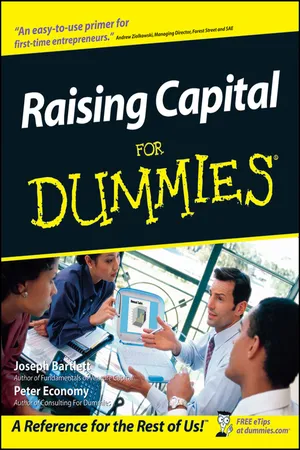Cashflow Problems
Cashflow problems refer to a situation where a business experiences a shortage of cash to meet its financial obligations. This can occur when there is a mismatch between the timing of cash inflows and outflows, leading to difficulties in paying suppliers, employees, or creditors. Effective cashflow management is crucial for sustaining business operations and ensuring financial stability.
7 Key excerpts on "Cashflow Problems"
- eBook - ePub
- Michael W. Fountain, Thomas W. Zimmerer(Authors)
- 2018(Publication Date)
- SAGE Publications, Inc(Publisher)
...A business that is showing a profit on its income statement can still fail if it does not have cash to meet its financial obligations. Decreases in cash occur when the business makes purchases of inventories, parts, or materials for production. As discussed previously, cash outflow is high for new business ventures at the beginning of the cash flow cycle: there will be purchases for inventory and payroll and production expenses, and these will always lead the cash inflow that comes from collecting receivables. The reality is that, on many occasions, a business grows at a rapid pace, and it expends all of its cash—paying employees, managers, suppliers, and creditors—until cash is completely expended and the business is no longer able to meet its financial obligations. Banks, the normal source for loans, are reluctant to provide additional financing in this circumstance because their managers will see the entrepreneur as incompetent for allowing this cash crisis to occur. Without additional cash, the firm cannot meet obligations to creditors. When this occurs, creditors can file an action with the courts to force the business into bankruptcy in an attempt to recover some of the money owed to them. The bottom line is always the same: Cash is king. Cash Flow Process Chapter 5 briefly discussed the need for every new business venture to have a statement of cash flow. Cash flow management is critical and involves tracking the sources and uses of funds on, normally, a monthly basis...
- eBook - ePub
Accounting and Finance for Managers
A Business Decision Making Approach
- Matt Bamber, Simon Parry(Authors)
- 2020(Publication Date)
- Kogan Page(Publisher)
...A business also needs cash to purchase assets such as machinery, equipment, vehicles and premises. In addition, cash is needed to pay dividends to investors, pay interest on loans and pay any taxes due. On top of this, at any one time a business may have cash tied up in current assets such as inventory and accounts receivable. This will be a normal part of operating the business, but the more money that is tied up in assets the greater the cash requirement for the business. For example, if a business offers credit to its customers, this will delay the receipt of cash from sales and will in turn increase the amount of cash the business needs because it still needs to pay wages and other bills. In a similar fashion, if a business increases its levels of inventory it will also increase its need for cash. What is cash flow? Cash flow refers to the ways in which cash moves in and out of a business through receipts and payments and also how it circulates within the business to be tied up in various assets such as inventory of accounts receivable. This flow of cash is represented in Figure 7.1...
- Triant G. Flouris, Dennis Lock(Authors)
- 2016(Publication Date)
- Routledge(Publisher)
...You simply do not have the cash up front with which to start your venture. In project management terms, you have a cash flow problem. Cash flow management is very similar to managing your own checking account and budgeting your own day-to-day finances. Without money in the form of ready cash you cannot do all the things that you would like to do in your life. So it is with all companies. Even when the work or services they provide are potentially profitable (which means that the project or product costs less than the expected revenue from sales) if there is no cash in the bank to meet the immediate costs of running the business and paying the staff, suppliers and sub-contractors, that business will fail. Cash is the lifeblood of projects. In this chapter we deal with cash flows from the perspective of the project manager, so that we are concerned here only with the direct costs (because the project manager has no direct control over the organization’s fixed overhead costs). UNDERSTANDING CASH FLOWS Project managers tend to occupy their minds with day-to-day matters such as technical difficulties, design errors, the allocation of work, progress against the schedule, performance of sub-contractors and expenditure against the authorized cost budgets. The vital subject of project cash flow might be appreciated by a few of the senior staff who work in project organizations, but it is more often completely misunderstood by people whose qualifications and interests are mainly technical. Two very common mistakes are: 1. confusing cash outflow schedules with net cash flow schedules; 2. regarding a predicted final project profit and loss statement as being completely satisfactory if it forecasts a good end result, but without giving any thought to the cash flows that must take place during the project life cycle. Cash flow forecasting was introduced in Chapter 6 in the context of financial project appraisal...
- eBook - ePub
- Joseph W. Bartlett, Peter Economy(Authors)
- 2011(Publication Date)
- For Dummies(Publisher)
...Chapter 19 Ten Steps to Improve Your Cash Flow — Now! In This Chapter Requiring immediate payment Invoicing more often Budgeting your cash Staying on top of your accounts receivable Making sure that your invoices are right W hen you own your own business, or when you’re involved in the management of one, you’re probably well aware of the importance of cash flow — the difference between what comes in and what goes out. Cash is the lifeblood of every organization. It pays for your employees’ salaries, their medical benefits, the chairs they sit in, and the computers they use to do their jobs. It pays your company’s rent or mortgage payment, and it pays to keep the lights on and the water running. It pays your salespeople’s expense accounts, and it pays for your outside accounting firm, your corporate lawyer, and your overnight delivery charges. Cash goes in and out of a business all the time. Not all cash flows are created equal, however. There is the good kind of cash flow (positive, when you’re bringing more money into your bank account than you’re sending out of it) and the bad kind of cash flow (negative, when you’re sending more money out of your bank account than you’re bringing into it). Every business experiences positive and negative cash flows — it’s a natural part of doing business. If your burn rate — the speed at which you spend your cash — is too high, and your cash isn’t being constantly replenished fresh from the sales of products or services, you soon find yourself in financial trouble. Smart businesses manage their cash flows to maximize positive cash flows and minimize negative ones. In this chapter, we take a close look at how to create more positive cash flow...
- Michael Chibili(Author)
- 2019(Publication Date)
- Routledge(Publisher)
...Cash inflows represent increases in cash to the organization whereas cash outflows represent decreases in cash to the organization. Net cash flows represent the net effect of cash inflows and outflows. Profitable businesses are expected to generate enough cash for their day to day operating activities. However, some businesses can be profitable but find themselves short of cash. A better understanding of this paradox would entail an understanding of the principles of working capital management, which is discussed in Chapter 8. 5.1.2 Differentiating profits from cash Over time, profitable businesses are able to generate enough cash. In the short term however, profits are not equal to cash. Based on the matching principle, costs are matched against the revenues they help to generate. As a result of this, income and costs that have not been received or paid in the form of cash can be recognized. An example is annual depreciation and amortization allocations are deducted in the establishment of the net income despite the fact that these do not entail any outward movements in cash. In situations of the acquisition of fixed assets, cash can be used but this may have no immediate and direct effect on the income statement. For example, purchasing an item of machinery, cash as a current asset item will be used and in the balance sheet this will be replaced by the creation of a fixed asset item. This has no immediate impact on profit, though over time this fixed asset item will be reduced as it is depreciated. To illustrate this difference between profit and cash, let’s use the following example. A company purchases a catering van that will be used for 5 years at a cost of €10,000.00 and the company uses straight line depreciation method. The impact on cash would be a reduction of €10,000.00 and fixed assets will increase by the acquisition value of the van of €10,000.00. There will be no immediate impact on profit...
- eBook - ePub
- Keith Checkley(Author)
- 2012(Publication Date)
- Routledge(Publisher)
...3 CASH FLOW AND THE BANK See the Capital Cycle Diagram opposite. In the first chapter, we focused on some macro and strategic issues affecting cash flows. Now we shall concentrate on the lower half of the capital cycle diagram. The working capital cycle of a manufacturer is illustrated. The traditional definition of working capital is of course well known as current assets minus current liabilities. Within this the bank overdraft would feature as a current liability. However if we think about this very carefully the bank is not actually a working capital item in any business - but is in fact a working capital provider if the business is cash negative within the cycle, or a working capital recipient if the business generates positive cash flow from the working capital cycle. The estimating and monitoring of cash flow requirements is therefore a key issue for any type of business be it large or small, as we have previously seen. Where a business requires funding by way of debt for working capital or capital expenditure purposes, the bankers concerned will be scrutinizing cash flows as a prime area within their credit-risk appraisal. It follows that the first key to the control of working capital is to minimize the amount invested in the working capital cycle to reduce the potential need for external financing. Managing the Cash Flows Within the cycle, creditors are unusual in that during the period of credit taken they represent an interest-free loan to the company, the benefit of which arises directly as a consequence of trading. Thus it is in the interests of most businesses to maximize the free-credit period available from creditors. This does not necessarily mean extending the period before payment beyond the agreed terms with creditors as this will have an impact on the business in three ways...
- eBook - ePub
- Robert McCallion, Alan Warner(Authors)
- 2010(Publication Date)
- Teach Yourself(Publisher)
...If one is required, make sure that you find this out before delivery of the goods or service, or at least before sending the invoice. Even more important, do everything possible to avoid errors or ambiguities at the invoicing stage by making sure that your customer understands completely what you intend to invoice and the amounts involved. It is sometimes tempting to leave the wording as vague, particularly if you are ‘trying it on’ – for instance to recover expenses where there is some ambiguity as to what is chargeable. However this is usually counter-productive and just leads to delay at the payment stage. Customers – who are managing their own cash flow – will usually take up any opportunity to delay payment, so you must avoid providing them with easy excuses. Influencing customers to pay Whatever the relative power situation, someone in your organization has to do everything he or she can to develop a good relationship with the people in the customer offices who actually deliver the payments – normally different people from those who make the buying decision. You must get them on your side, help them to see things from your point of view, point out the importance of cash flow to your business and how you need cash to continue to deliver the goods and services that you supply. If you are a small business and the customer is a large one, it is quite legitimate to make the point that cash flow is important to your survival, though you must be careful not to give the impression that you are desperate – even if you are! If your customers are also small businesses, then you should be looking to establish mutual understanding, while being firm and assertive about your own needs. In practice there will be enormous variations in customer responses and a lot will depend on the extent to which they have a clear policy and efficient systems...






